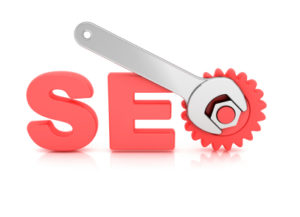 I rarely am asked to work SEO magic on a brand new website and/or company, which is often a shame. The business typically relies upon the web developer for SEO assistance or has no idea what SEO is until they get into marketing their brand. When I come in, it sometimes appears as a patient would to a dentist who hasn’t seen this patient in several years. It’s a mess, and there’s a lot to work with.
I rarely am asked to work SEO magic on a brand new website and/or company, which is often a shame. The business typically relies upon the web developer for SEO assistance or has no idea what SEO is until they get into marketing their brand. When I come in, it sometimes appears as a patient would to a dentist who hasn’t seen this patient in several years. It’s a mess, and there’s a lot to work with.
Surprisingly, nearly every project I receive lacks three vital elements for SEO. I don’t know why web developers don’t include them. At this point, I’ll assume it’s outside of their scope. However, all websites that want to garner any traffic for any reason needs the following three tools installed:
- Analytics
- Google Search Console
- Sitemap
Analytics
I personally recommend creating a Google Analytics account simply because it’s free and easy to use. But really, any Analytics account is fine, whether it’s Quantcast, Clicky, Woopra, Chartbeat, or any other analytics application. It’s very easy to install Google Analytics to your website, especially if you use WordPress, Concrete5, Joomla, or SquareSpace. If your developer built the site using their own custom CMS (content management system), then it gets slightly trickier.
The purpose of analytics is to learn about your audience. What search terms do they use to find you? Are those even the correct terms you want them to use? Do they come from your social media campaigns? Where does your audience live? What times of day do they frequent your site? Does your audience behave on your site the way you want them to?
All of this is vital information for your business, no matter if you have an e-store, you’re selling services, or you’re writing a blog.
Google Search Console
You may have heard of this by another name—Google Webmaster Tools. Some higher up in Google decided it needed to be changed, and here we are. The purpose of Search Console is exactly the same as it was before. It crawls your website and looks for any errors and potential problems with usability.
It also lets you know if there are any search problems, such as missing header tags, duplicate tags, tags that are too long, and tags that are too short. If you’re wondering why you have a drop in traffic, it’s often a good idea to check Search Console first for any errors. If everything is running smoothly in Search Console, then your site will rank higher for your target keywords.
Sitemap
Believe it or not, sitemaps aren’t an automatic element with websites. Sitemaps need to be manually created, either with a plugin or with someone skilled in XML. Once you have your sitemap, the next step is to submit it to Search Console. This is the one way to ensure that Google correctly indexes your website.
Sitemaps can be adjusted in your website as well. If you don’t want certain pages to be indexed and therefore searchable, such as login or password-protected pages, they can be removed from the sitemap.
Need help installing any of these SEO tools for your website? Feel free to reach out and I’m happy to help!

Leave a Reply